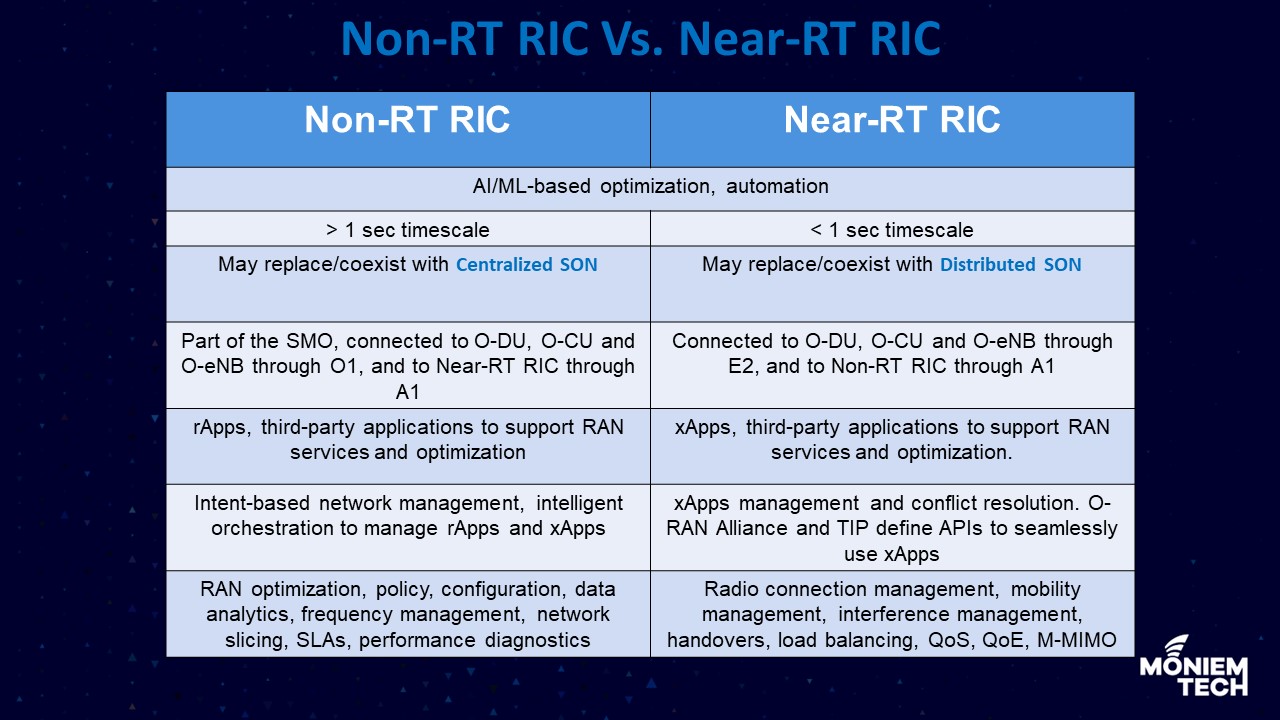The RAN intelligent Controller (RIC) is cloud-native, and a central component of an open and virtualized RAN network. The RIC aligns with 3GPP release 15 and beyond. It is foundational to enabling network programmability, intelligence, and disaggregation in a modern network.
It is an essential component of the Open RAN architecture. The RIC architecture includes a Distributed Unit (DU) software function, a multi-RAT CU protocol stack, a near-real-time RIC, and an orchestration/NMS layer with Non-Real Time RIC.
Through control and management planes, RIC accesses the big picture of the RAN, such as elements, connections, and functions. This enables the RIC to make intelligent decisions about the RAN in order to optimize performance, from resource and service optimization, artificial intelligence (AI) and machine learning (ML) integration, energy optimization, and network slice assurance.
This enables use cases within the network, such as optimized media and game streaming through efficient spectrum utilization; revenue opportunities such as private and localized mobile networks through geolocation and network slicing; and increased opportunities for CapEx savings and better sustainability in energy consumption.
Non-RT RIC and Near-RT RIC
The RIC comprises both non-real-time (non-RT) and near-real-time (near-RT) components, both of which manage separate functions of the RAN. The non-RT RIC manages events and resources with a response time of one second or more. The near RT RIC manages events and resources requiring a faster response down to 10 milliseconds (ms). The non-RT RIC is deployed centrally, while the near RT RIC can be deployed centrally or on the network edge.

